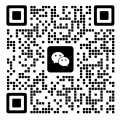Current effect interference of wave radar level measurement
Current effect interference has always affected the transmission rate and accuracy of wave radar level measurement. Because it is an industrial measuring instrument, the sensor is measured in a severe environment most of the time. For example, an outdoor high voltage electric field, a high temperature current area, or a ground current area will interfere with the transmission rate of the wave radar level measurement. Even though most radar level sensors are immune to interference and temperature compensation, these features have proven to be unsuitable for harsh measurement environments.
There are so many solutions for the current effect interference of the wave radar level measurement. At present, the most effective way is to mitigate the influence of external current interference through DC interference and AC interference.
DC interference wave radar level measurement
When using the wave radar level sensor while measuring, if there is an additional DC current voltage, it is DC interference. In severe cases, the wave radar level gauge will not work properly. Under normal circumstances, the sources of DC interference are as follows: When the radar level sensor is in contact with the DC power source, the leakage current will generate an interference voltage, an additional thermoelectric potential or a chemical potential through the measurement loop. This means that external environmental factors affect the transmission rate of the radar level measurement.
AC interference wave radar level measurement
Unlike DC interference, the AC interference guided wave radar level measurement has a wider range. AC interference can be divided into line interference and ground interference. Inter-line interference means that an AC voltage will appear between the output terminals of the radar level measurement (compensation line) under external influence. This interference is also known as lateral, common mode or common mode interference. In general, the line-to-line interference voltage can reach several millivolts or even tens of millivolts. Ground disturbance is one of the two outputs of the current radar level gauge (or compensation conductor). The AC voltage to ground is called the ground disturbance voltage. This type of interference is also known as longitudinal, series mode or crosstalk. In this case, the ground interference voltage can reach several volts or even more than 100 volts.
Whether it is direct interference or indirect interference, they will affect the life, transmission rate and accuracy of radar liquid level sensor. At present, there are only a handful of wave radar liquid level sensors that can solve current interference. The specific solution can refer to the wave radar level measurement produced by Holykell, which will provide the best solution for current interference.





